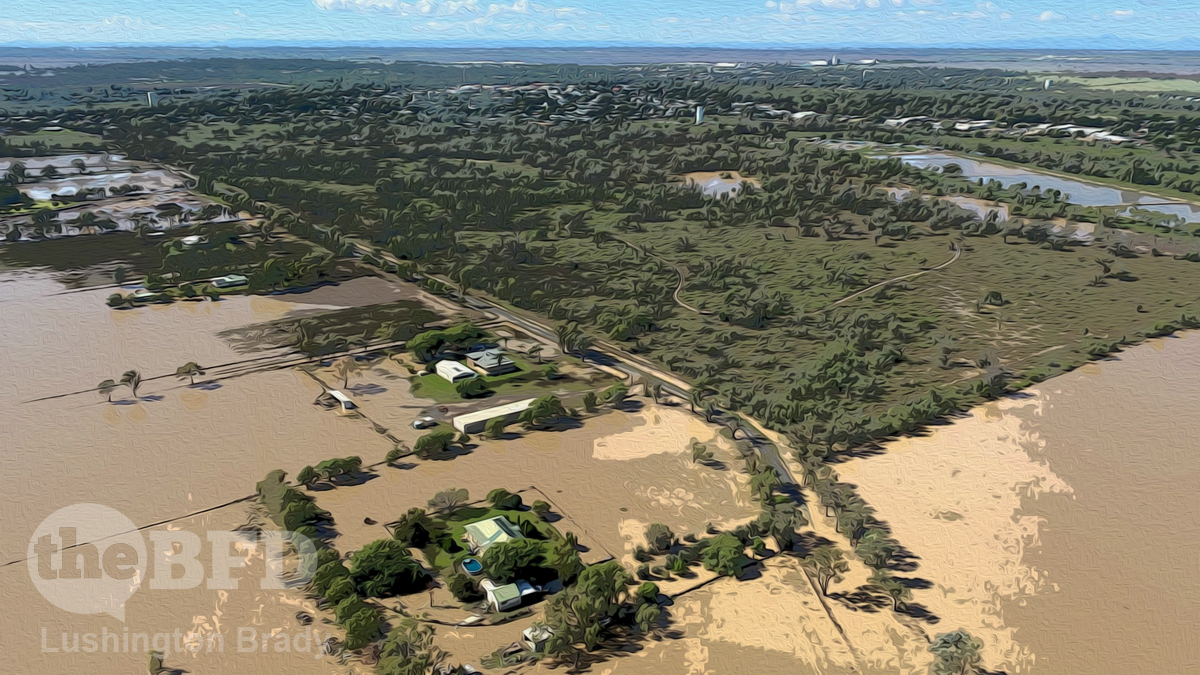I spent a great deal of my childhood and early teens in the Otway Ranges, the belt of temperate rainforested hills that are the northern half of the spectacular scenery of the Great Ocean Road. BFD readers might remember seeing the Otways in the horrifying firestorms of Ash Wednesday.

In retrospect, the bushfires should have been no surprise. The fuel load had built up for decades and by the drought of the early 80s, the place was a tinderbox. The massive loss of property and lives was foreseeable, too. Driving the winding dirt tracks to our favourite camping spots, the gullies were dotted with bush retreats. Most of them had the rainforest coming right up to their windows. Idyllic, without a doubt, but I still remember Dad (a former volunteer firefighter) remarking, “They’ll be stuffed if there’s a bushfire”.
Within a few years, the only signs left of the fires were blackened trunks showing through masses of green new growth. And hundreds of rebuilt bush retreats being joined by thousands more new dwellings. Now, nearly 40 years later, what have Australians really learned?
Development in areas prone to flooding and bushfires should be halted, says the chair of Infrastructure Australia, who is calling for an overhaul of land planning to confront the rising threat of natural disasters.
Naturally, Col Murray genuflects to the ruling orthodoxy of climate change. But, in the current period of mild change, are disasters really “rising”? So far, the evidence globally is firmly pointing the other way.
But Australia is not the world. Dorothea Mackellar wrote of its “drought and flooding rains” for good reason. South-East Australia is some of the most fire-prone landscape in the world. Great river systems also converge, creating rich flood plains. It’s also some of Australia’s most densely-populated land.
“We can’t have further development on flood plains,” Mr Murray said, questioning if the inundated NSW city of Lismore “was built in the right place”. “We can’t allow further development in high-risk bushfire-prone areas. There’s a planning responsibility that, somehow, we need the whole community to be involved in arriving at that solution.
“We talk about that magical ‘one in 100 year’ flood-planning level; well clearly that level is not the right level we need to be working with in the future.
Australia’s predilection for fire was thousands of years in the making. Regular burning by nomadic hunters created vast, semi-open grasslands. These were burned on a pattern that suited the needs of the inhabitants for tens of thousands of years. But when that system of burning was interrupted by new arrivals, who for the first time in the continent’s history built large, permanent settlements, disaster quickly followed. Within scant decades of the settlement of Victoria, perhaps Australia’s worst-ever bushfire erupted. The loss of life in the thinly-settled colony of 1851 was minimal, though stock losses were catastrophic. Now that millions of people live in the region, the death tolls from disasters have soared.
On Thursday, IA is releasing the Regional Strengths and Infrastructure Gaps report to support the “regional renaissance” that has occurred as a result of large population shifts due to Covid’s affect on migration trends […]
“We just can’t keep doing what we’ve done after every other bushfire or after every other flood,” he said.
“We’ve got to change things, and that will be the confronting part for many, many people in many different sectors.”
The Australian
This is the real issue confronting Australia: not climate change, but land-use change, and adapting to not just fire, but the floods that are always going to occur in river systems. Flood plains are, well, flood plains. They’ve always been attractive to humans: the first settled human communities were built on flood plains. But modern cities don’t cope so well with floods.

The same is true of fire. Every major bushfire since the 1930s has been followed by official inquiries, which all conclude the same: there must be regular fuel-reduction burning, somewhat mimicking the pre-European burning regime.
Yet, even on the eve of the catastrophic bushfires of 2019-20, “tree-change” communities in Gippsland were campaigning furiously against planned fuel-reduction burns, on environmental grounds. The burns were cancelled. Months later, the whole region went up in smoke, anyway — and the ABC Memory-Holed its stories praising the protesters.

